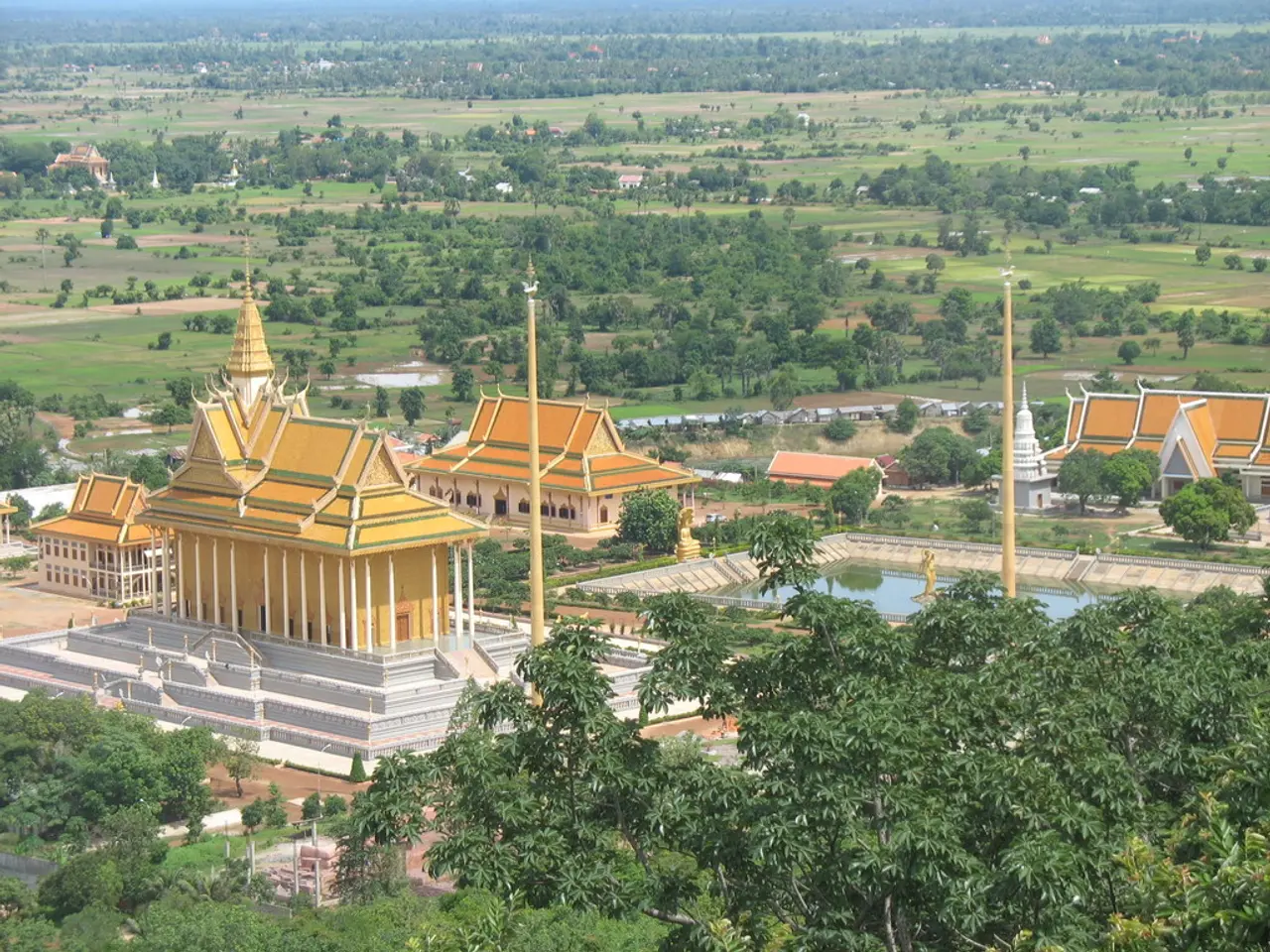Ancient Marvels Explored: Bettany Hughes Discusses the Seven Awe-Inspiring Wonders of the Past World
The Seven Wonders of the Ancient World have captivated the imagination of people for centuries, standing as testaments to the ingenuity and ambition of civilizations long past. These marvels, listed in the ancient Egyptian papyrus text known as the "Laterculi Alexandrini," showcase the finest natural features and cultural achievements of the time.
Built more than 45 centuries ago, the Great Pyramid at Giza is the oldest of these wonders. It was constructed as a giant resurrection machine for King Khufu of Egypt, a symbol of his power and eternal life. The pyramid's mathematical precision is astonishing, with it being close to geometrically perfect. Originally, it was cased in gleaming, polished, white Tura stone.
The Mausoleum of Halicarnassus, built by Mausolos and his wife Artemisia in c351 BC, was a hybrid of Assyrian, Egyptian, Greek, and Karian styles. This grand structure, however, was not destined for eternity. It was destroyed by war and earthquake. Artemisia, the wife of Mausolos, is said to have ground down Mausolos's bones to drink them after his death, an anecdote passed down from Roman times.
The Temple of Artemis at Ephesus, subsidized in the sixth century BC by King Croesus of Lydia, was a place of sanctuary. It attracted 50,000-100,000 visitors during its time, who came to praise the king of the Olympian Gods with displays of athletic prowess. The Temple of Artemis at Olympia, another sanctuary dedicated to the goddess, was renowned for its grandeur. It was destroyed in the mid-fourth century BC and was rebuilt in a grander form in c340 BC.
The Pharos Lighthouse of Alexandria, built in c297 BC, guided sailors to safety along one of the most perilous coastlines of northern Egypt and acted as a warning beacon in times of distress. The Colossus of Rhodes, built in c302/292 BC, stood high on the island overlooking the sanctuary of Helios where the Helian games were held in the god's honour. This gargantuan statue, probably erected as a celebration of a moment in history when conflict sharpened into diplomacy, is one of the most iconic symbols of ancient engineering.
The Hanging Gardens of Babylon, created between 691 and 550 BC, were designed to showcase exotic plants and trees, possibly as a venue for hosting visiting dignitaries. However, these gardens remain the most elusive of the Seven Wonders, with their exact location and appearance still a matter of debate among historians.
Lastly, the Statue of Zeus, built around 430 BC, was an incarnation of divine and human potential. Located in the Temple of Artemis at Olympia, it stood as a symbol of the harmony between the gods and humanity. Although the statue is believed to have been lost in a fire, it remains a powerful symbol of the awe and wonder that the Seven Wonders of the Ancient World continue to inspire.
The word 'wonder' means 'something marvellous.' Originally in the Greek, these attractions were described as thaumata - works that needed to be seen. Today, as we look back at these marvels, we are reminded of the incredible feats of engineering, artistry, and cultural achievement that humanity is capable of.
Traveling to the Seven Wonders of the Ancient World offers a glimpse into the remarkable lifestyle of civilizations long past, showcasing not only their breathtaking natural features but also their cultural and architectural accomplishments. A lifestyle that was centered on ambition, creativity, and a deep connection with the divine, as exemplified by the Statue of Zeus at Olympia. Lifestyle and travel have the power to inspire awe and wonder, connecting generations and bridging the gap between past and present.




